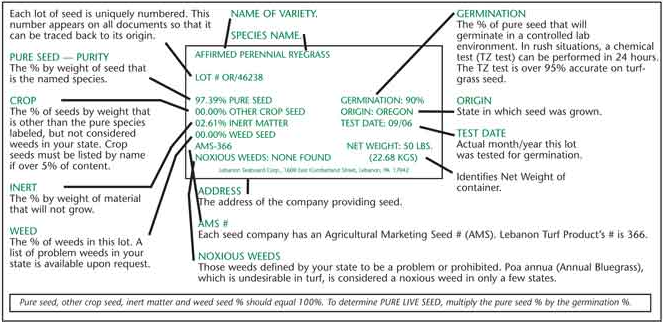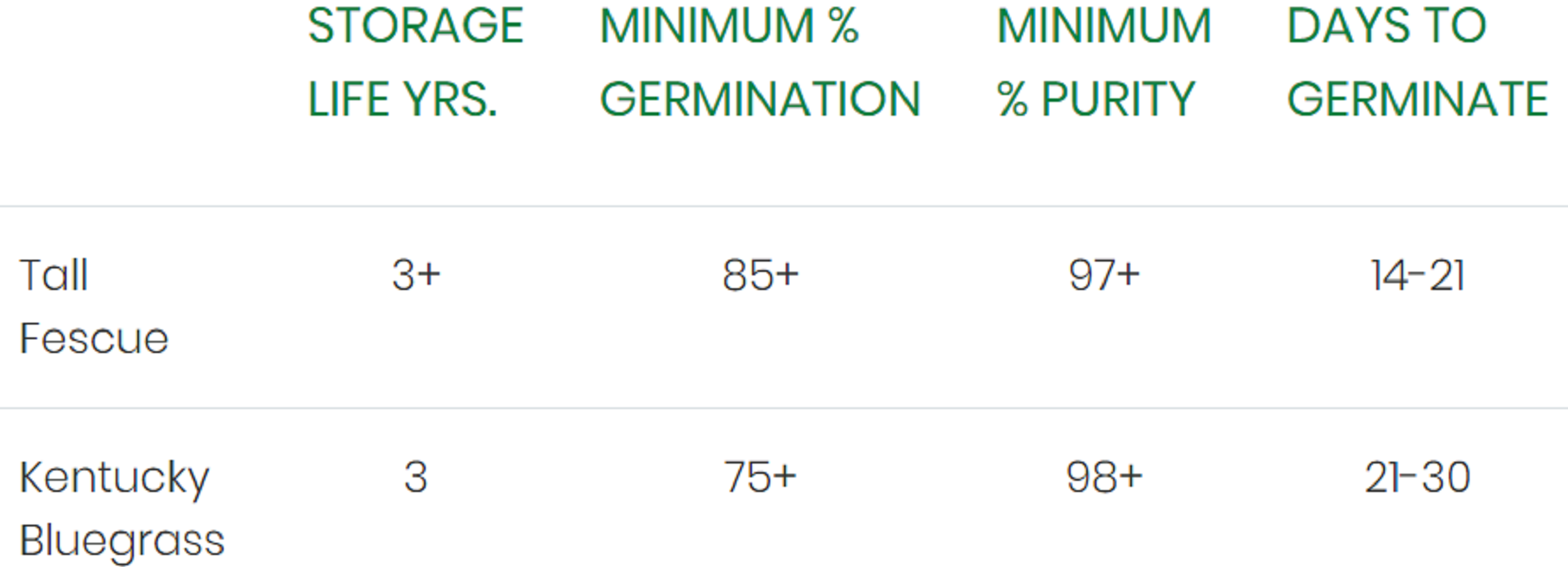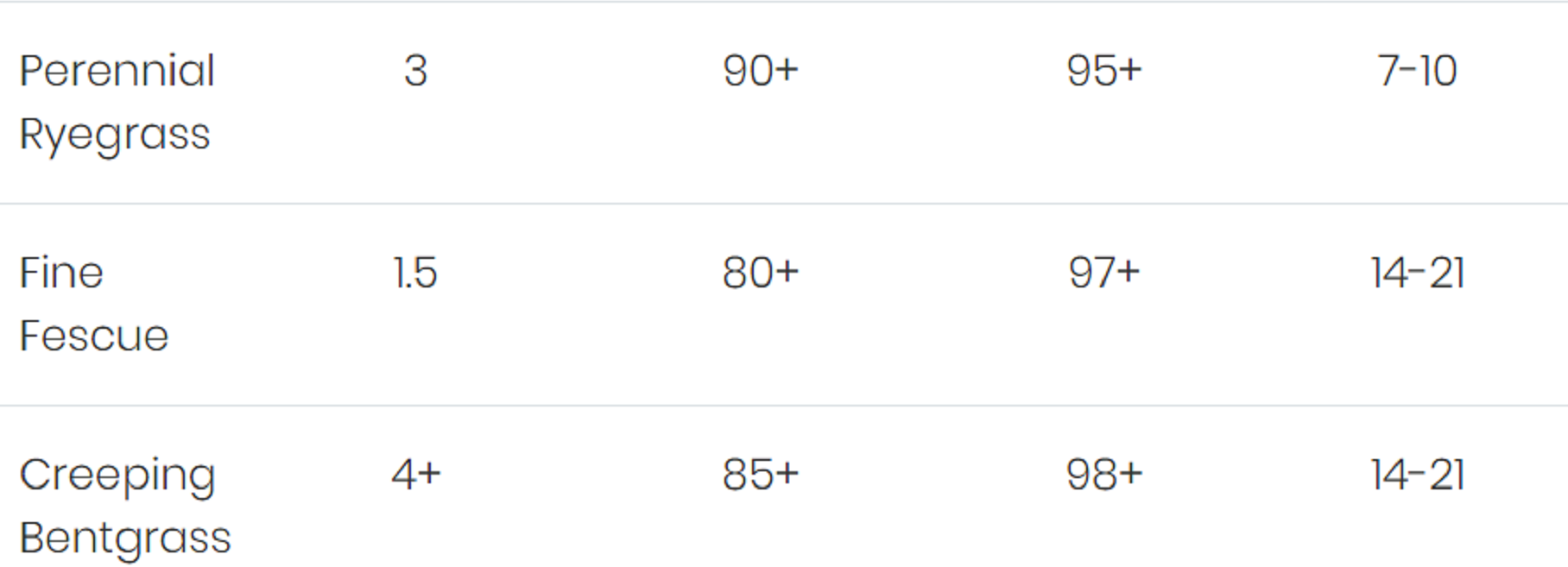Buying Turfgrass Seed
Buying turfgrass seed is a mystery to some turfgrass managers. But by reading the package label, asking a few questions and working with a trusted seed vendor to identify the cleanest and highest-rated varieties, you can ensure that the seed you purchase will deliver the results you want.
In many cases, the seed you plant will be on that site for 20 or more years. So it makes sense to choose the best seed varieties and physical quality seed available. The following questions are important considerations when buying turfgrass seed:
- Where is the seed going to be used; what is the condition of the site?
- What is the planned use of the turf site now and in the future?
- What are the planned maintenance levels for the site?
- What are the quality and performance characteristics of the seed varieties being considered?
Based on answers to these questions, your seed vendor can recommend the species and varieties best suited for the site and use. (For additional background on this subject, please see the article on this site titled Turfgrass Seed Due Diligence.)
This article will address the following:
- The physical quality of the seed – known as the seed’s purity – is shown on the seed tag. The pure seed percentage is the percentage by weight of the stated species and variety. Other components of the overall purity of the seed (usually much smaller percentages) include: other crop, inert material and weed seed content.
- The germination percentage of the seed is based on a grow-out test performed by an accredited seed lab. This percentage, which is also required by law to be shown on the seed tag, indicates the percentage of the seed that can be expected to germinate under normal conditions.
- Certification is the process that ensures the genetic purity of a turfgrass seed variety.
Reading the Analysis Tags

This chart shows a typical seed analysis tag and explains the commonly used terms.
Germination
Germination of a seed lot is determined by segregating 100 seeds onto a damp plate and putting the plate in a warm growth chamber. The length of time the seeds need to remain in the chamber before germination depends on the species. The number of seeds that germinate determines the germination percentage for that seed lot. To confirm the results, some states require a retest on a seed lot (or mix) after a certain amount of time – usually nine or 15 months.
Many seed vendors choose to use a slightly lower percentage than the actual test results indicate to make sure the seed meets the minimum requirements during the 15-month labeling period. For example, the actual germination may be 97%, but the vendor may label it at 90% so not to overstate the germination percentage while the label is in effect.
Germination Standards
Seeding vigor, germination and endophyte levels are all affected by the conditions in which seed is stored. Germination may decline after the first year if good storage conditions are not maintained. To maintain the highest seed quality, do not store seed in high heat and humidity.


Certified Seed
Certification is a process that ensures the genetic purity of a turfgrass seed variety throughout the production process. The certifying agency tracks the seed from breeder seed to foundation fields to production fields. Certain requirements must be met at each step, including how the seed is grown, and the minimum purity and maximum inert, other crop, and weed seed contents that may be present once the seed is processed and cleaned. If the seed lot meets those requirements, then it is certified and receives a Blue Certification tag – not to be confused with the analysis tag.
The requirements for purity are different for each species and are detailed in certification rules. However, certification primarily guarantees genetic purity. Many seed lots contain better physical purity than the minimum requirements for certification. In fact, an uncertified lot could have better physical quality than a certified lot.
Another consideration is the amount of weed seed content in each mix. It takes only a small percentage of certain weed seeds to be detrimental to a turf stand. Certain weed seeds will not persist at turfgrass mowing heights or could be easily controlled by herbicides. They may be unsightly at first, but will not have a lasting effect. Make sure you consider weed seed content and the type of weeds present when looking at a seed tag. Some weeds – different for each state – also may also be listed as noxious weeds.
Also consider what the other crop types are listed. A small amount of annual ryegrass in a perrenial ryegrass or tall fescue lot is normally not a major concern since the annual ryegrass will die out and not compete with the turf stand over an extended period. However, a species such as Orchargrass may be unsightly in a turf stand.
If seed is produced by high quality growers, many lots can show 0 crop and 0 weeds. Whenever you see 0/0 on a lot test or seed tag, you know you are getting a high physical quality seed.
Once a bag of certified seed is opened and used in a mix with other varieties or species, the mix is no longer certified unless the seed producer takes the additional step of certifying the mix. Most seed mixes are not certified, and as long as you use a reliable seed vendor, non-certification is not a major concern.
Calculating PLS
Calculating the Pure Live Seed (PLS) in a particular bag is a simple equation, but not many people take the time to do it. However, the PLS ratio is a good way to determine the quality of seed and to compare one mix (or variety) to another. To calculate the pure live seed, multiply the pure seed percentage by the germination percentage, as shown below.
Seed Mix A lists pure seed as 98% and the germination at 90% minimum. So, .98 x .90 = 88.2% PLS. Seed Mix B lists pure seed as 95% and germination at 85%. So, .95 x .85 = 80.75% PLS. If these mixes were priced similarly, the PLS percentage shows that Seed Mix A contains about 8% more pure live seed than Mix B and is therefore the better value.
For information on highly rated turfgrass seed mixes and blends from LebanonTurf, please visit LebanonTurf Grass Seed.